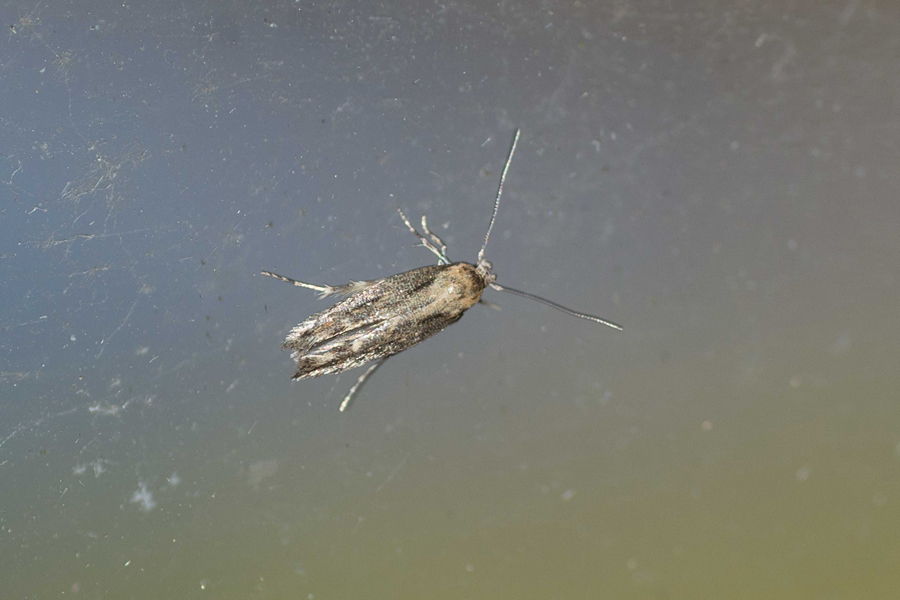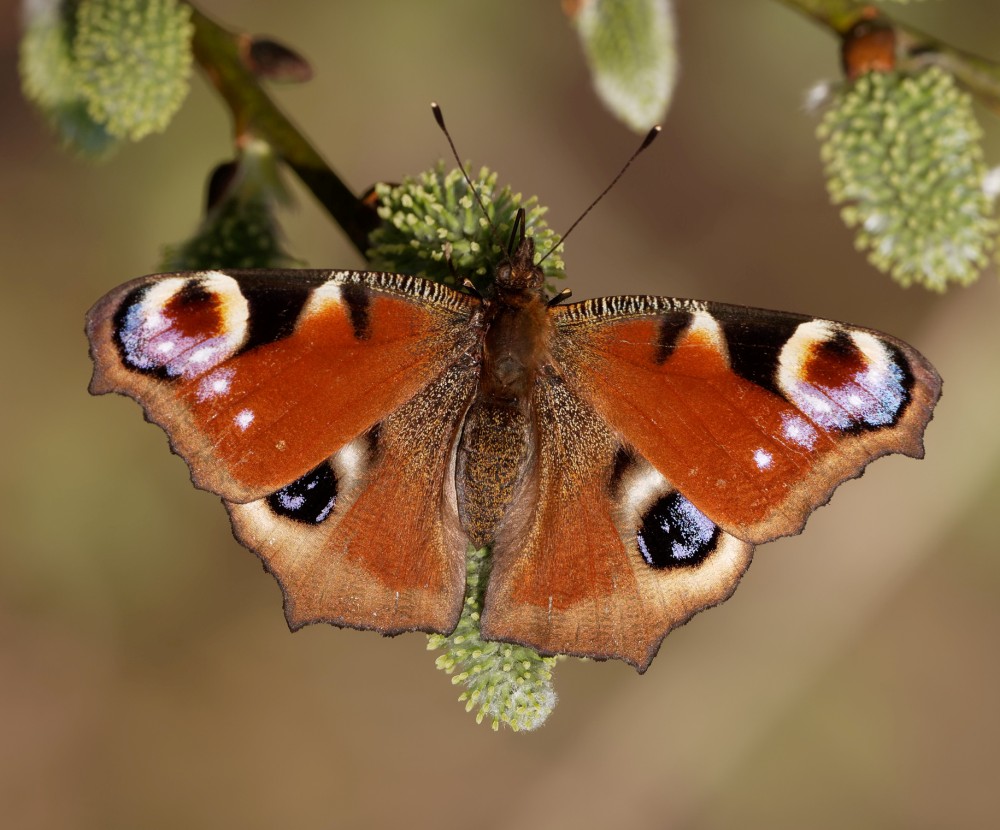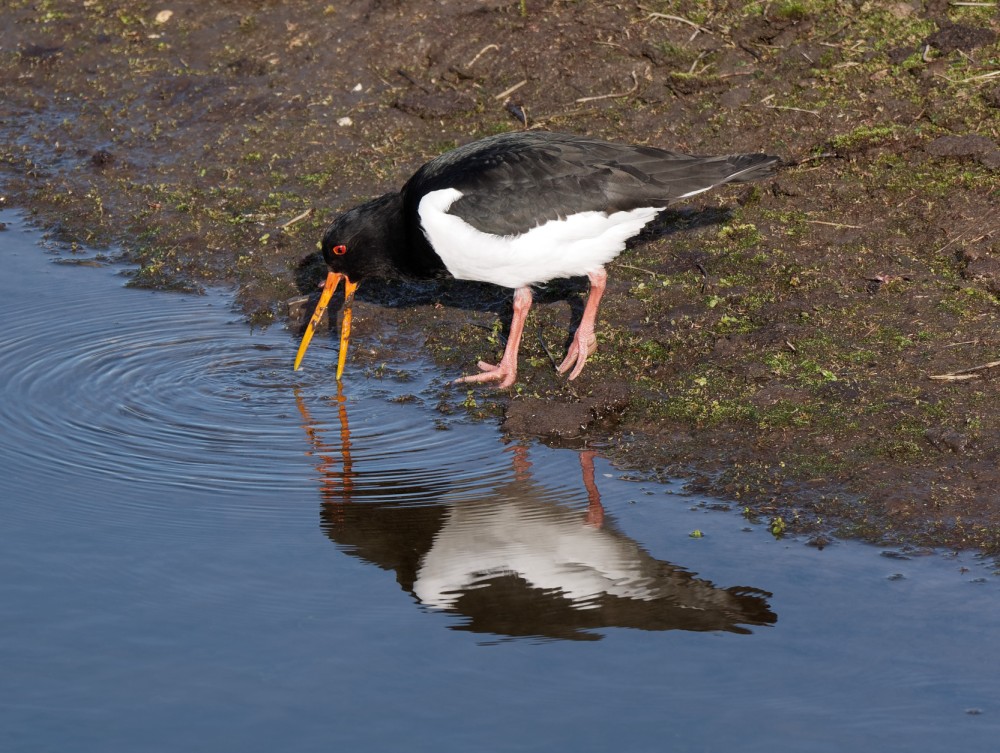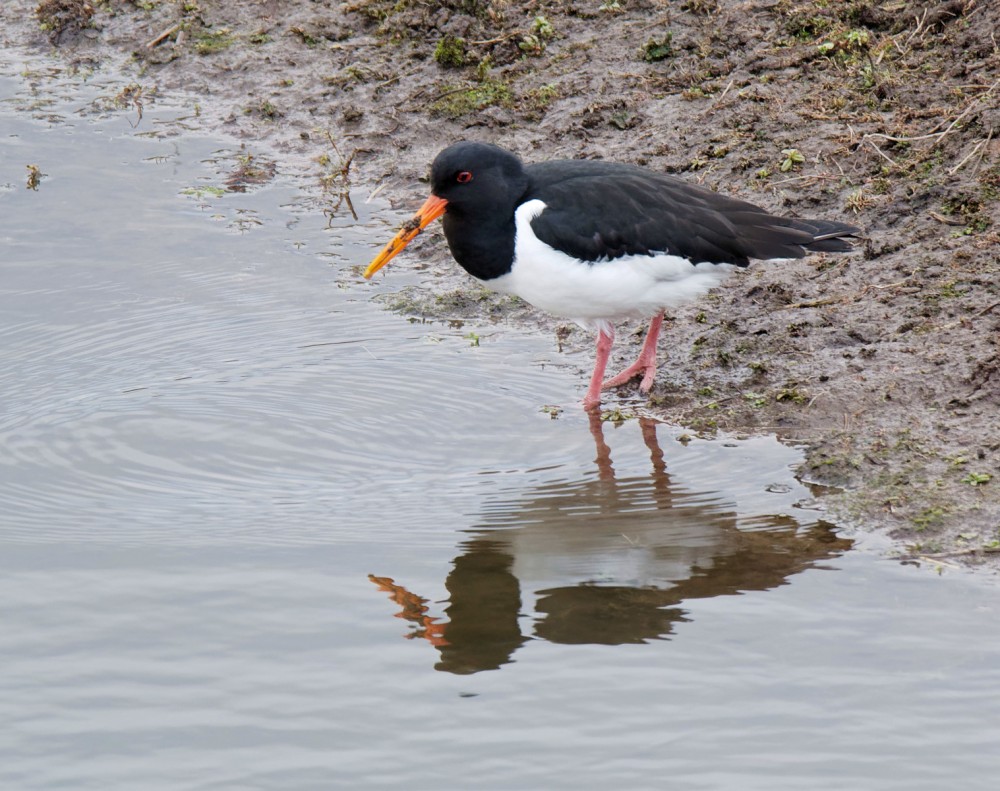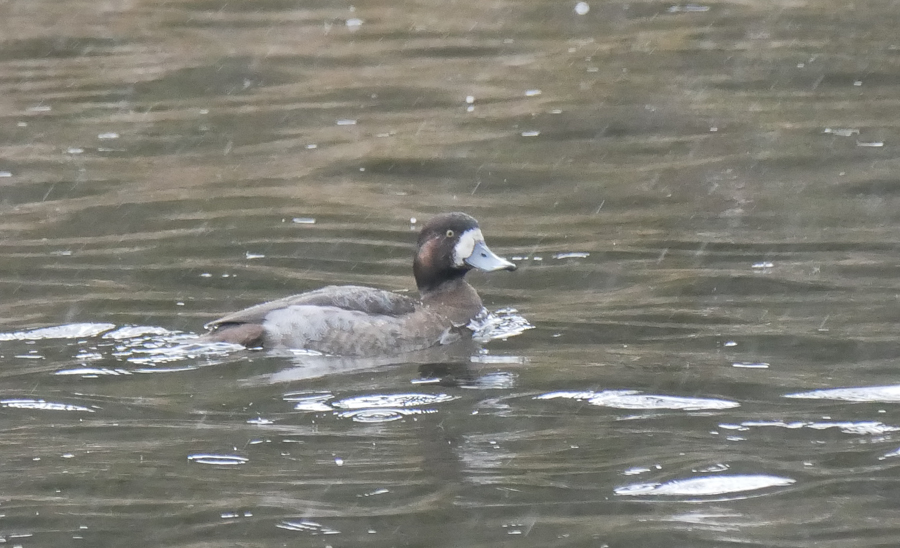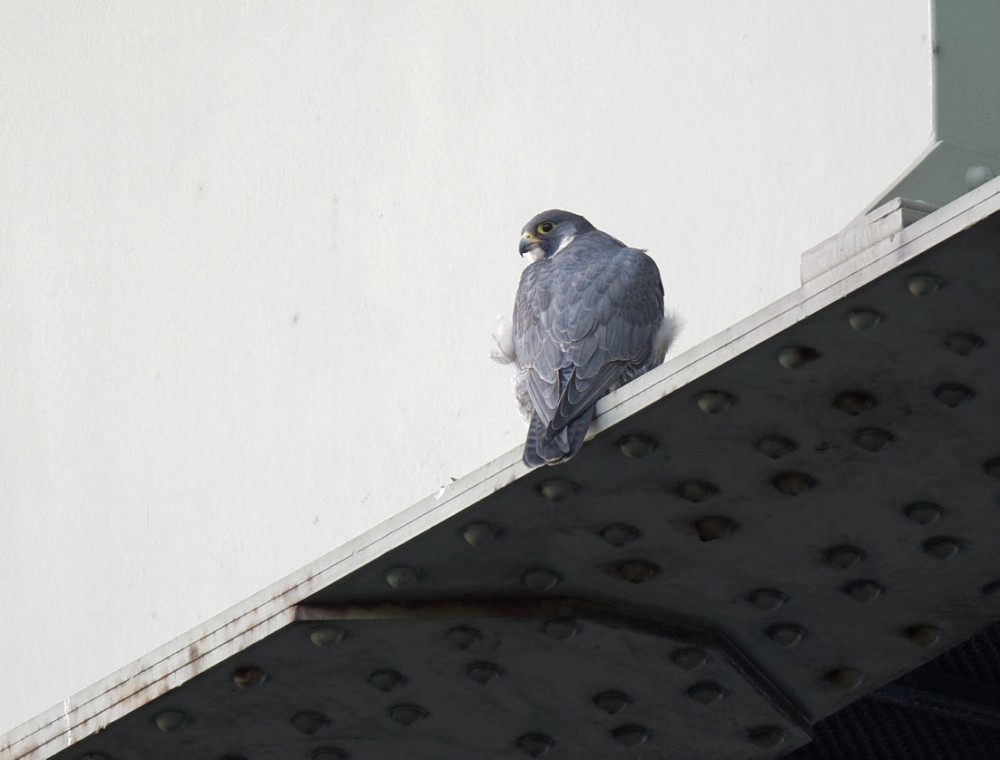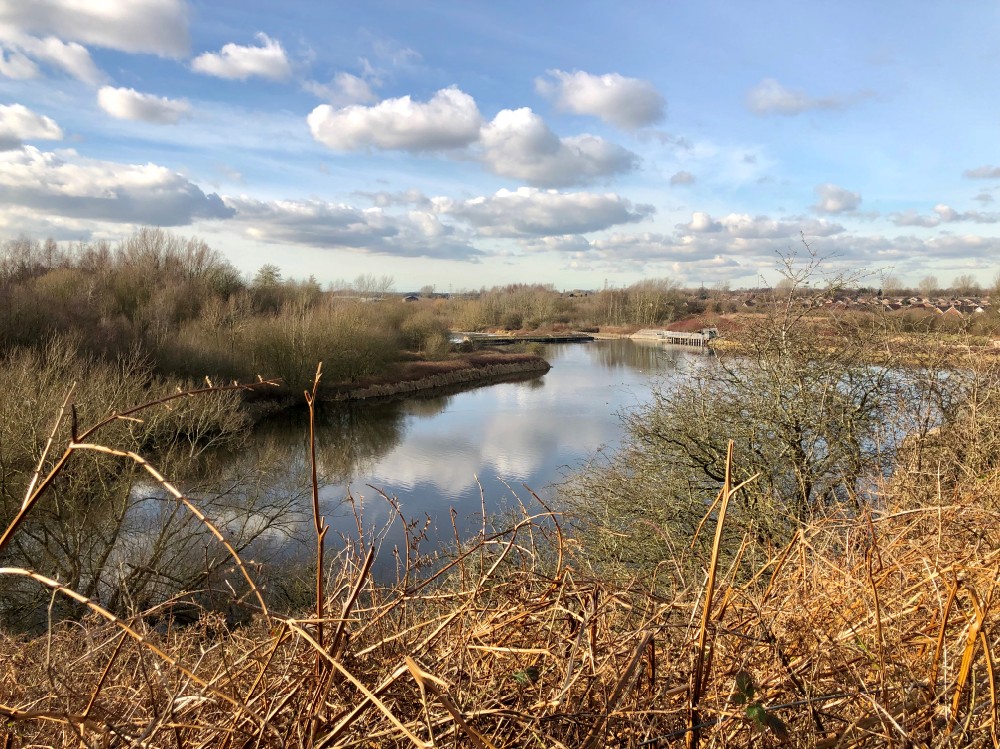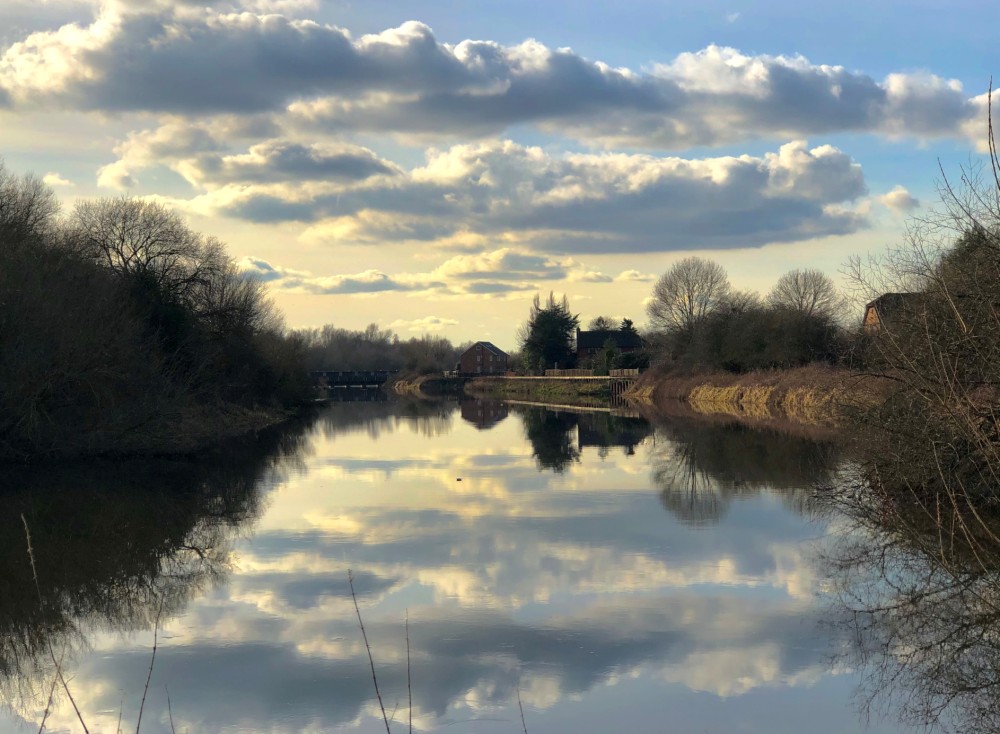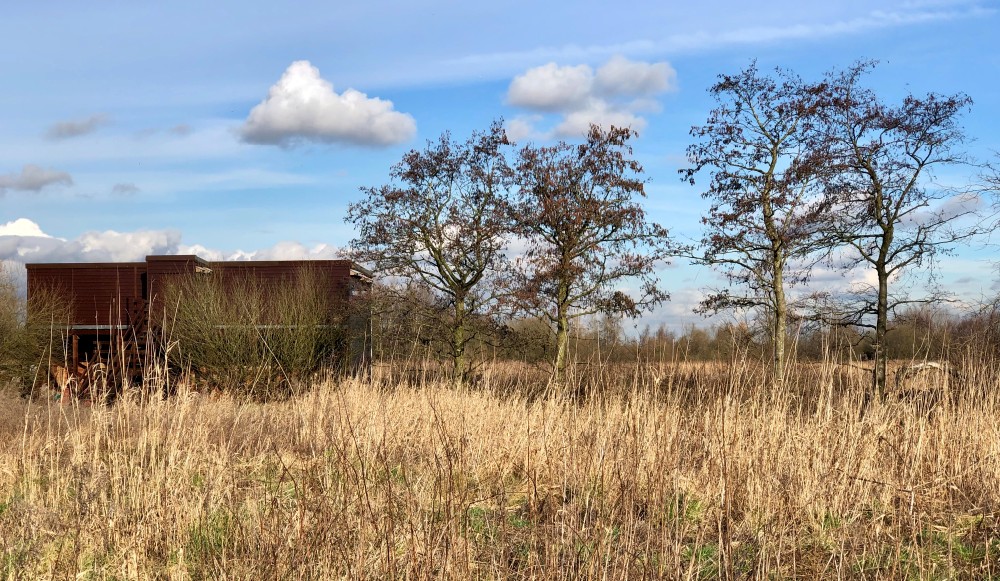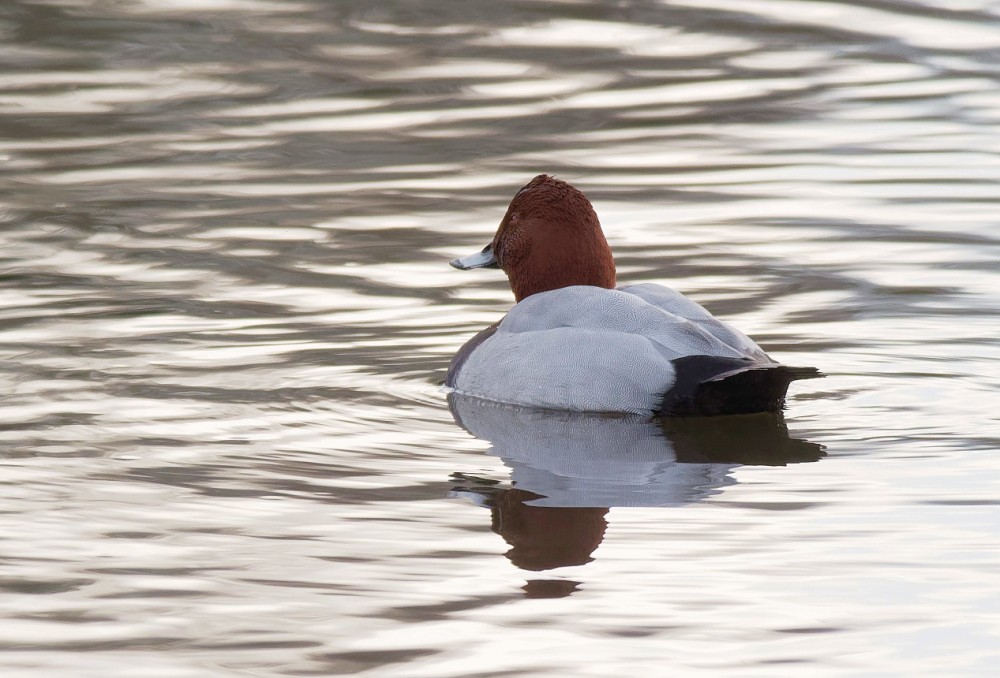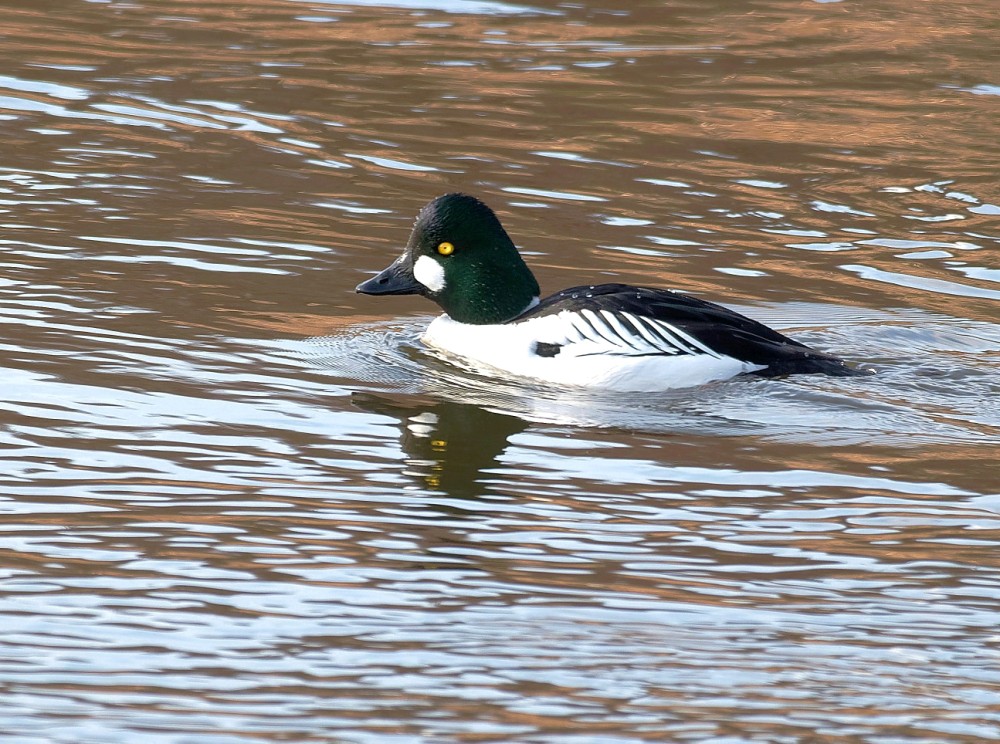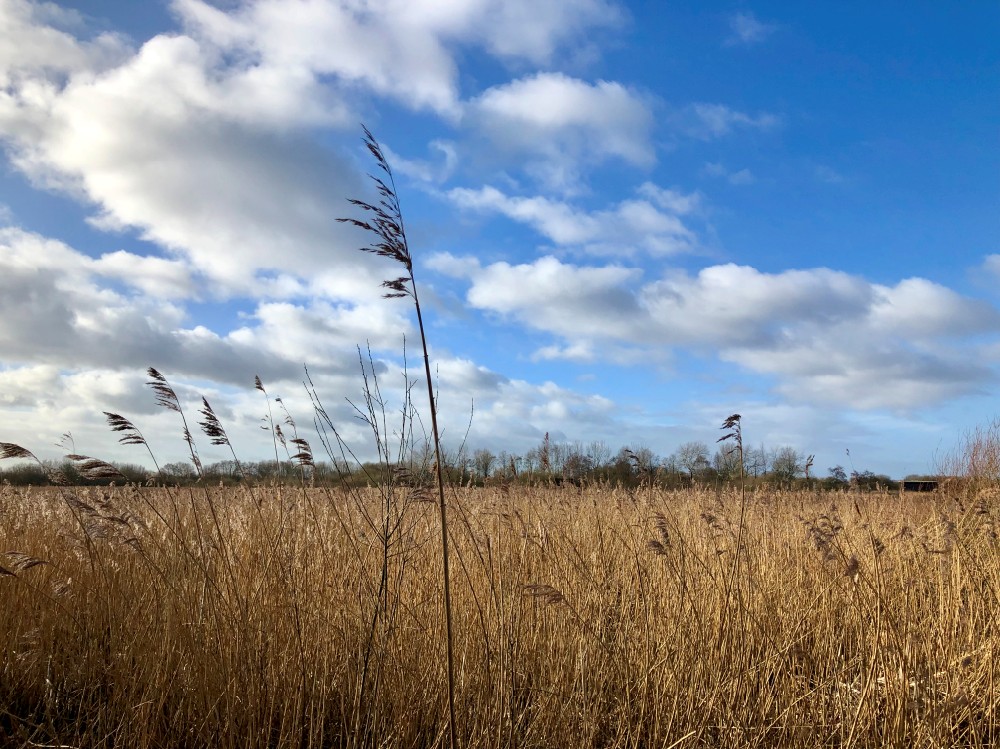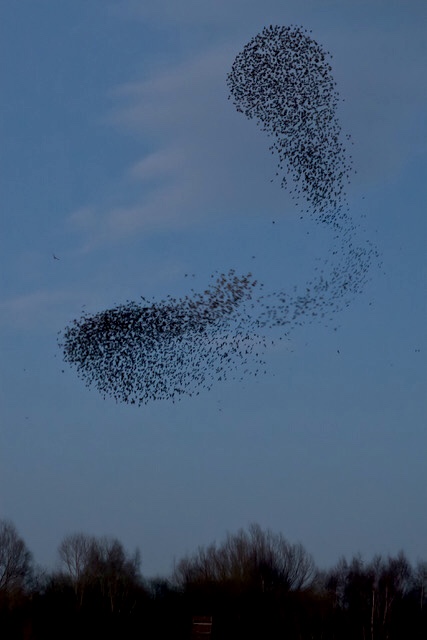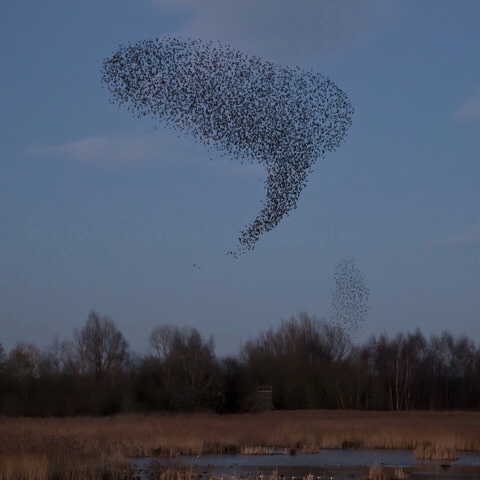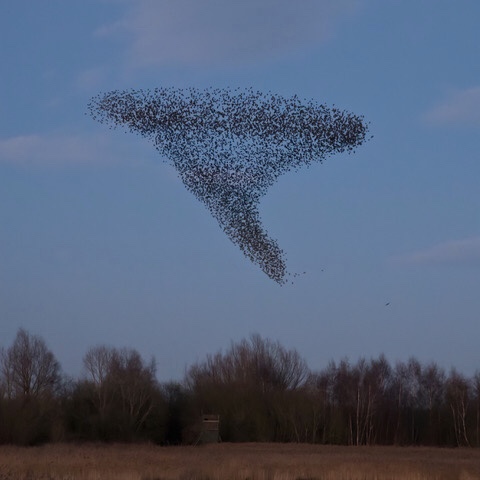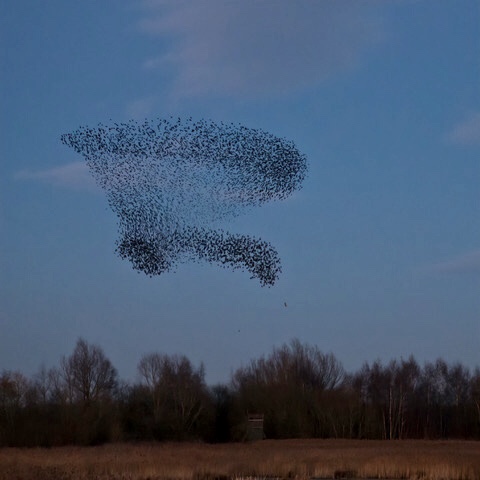Woolston Eyes Monthly Sightings
2019-02-21
I believe this to be Mompha Jurassicella
This rather local species, formerly known as M. subdivisella, occurs mainly in the south-eastern region of England, with a few records from surrounding counties. it Has been Recorded a few times in Cheshire
The larval foodplant is great willowherb (Epilobium hirsutum), the larvae feeding internally in galleries in the stems during July and August.
There is a single generaion, the adult moths on the wing from September, hibernating over winter and appearing again up to April.
Submitted by: Keith Gallie
2019-02-28
There was a marked change in the weather today as the sunshine of the last few days was replaced by damp and murky conditions. As always there was plenty of interest with some good reserve-wide totals. One of the resident Peregrines was on the viaduct, a Water Rail on No.1 bed; and 2 Oystercatchers and a Lapwing were on the scrape in front of the John Morgan Hide. Robins totalled 111 with 11 Song Thrush and 13 Dunnocks in song. Wildfowl counts of note were 101 Mallard, 467 Tufted Duck, 19 Great-crested Grebes and 3 Little Grebes. A flock of 50 Redwing was on No.4 bed. Only 2 Pochard were present, compared with 90 at Bollin Point alone the previous Saturday.
Submitted by: Dave Hackett
2019-02-27
Well, that was a spectacular day’s birding, in remarkable weather for February. Started at dawn with a Chiffchaff singing on the South Bank, then set off with Dan Gornall to continue with the National Willow Tit survey on No.2 bed. Incidental sightings there included Woodcock, four Kestrels, Peregrine, and we also managed to locate another Willow Tit territory. Spent the rest of the afternoon in the Morgan Hide, where a Cetti’s Warbler, 63 Pochard, 3 Bramblings and 3 Lesser Redpolls were the pick of the bunch. Butterflies were active, too, with 1 Brimstone, 2 Peacocks, 2 Small Tortoiseshells and 2 Commas on the bed. The best was saved for last, however, with the Starling roost, which is now on No.1 bed, holding an impressive minimum of 150,000 birds. While waiting for the murmuration to start, 43 Fieldfare dropped in to roost, two Water Rails were duetting and another Cetti’s Warbler in song. As ever, roosts of this size attract predators, with Barn Owl, Peregrine and three Sparrowhawks all active. The best was saved for last, though, as a Long-eared Owl appeared over my shoulder in the last of the light, before sliding away in the gloom. The link is to a video clip which is worth watching just for the dramatic way the Starlings drop into their roost.
To watch David’s video click here………….
or copy and paste this link into your browser https://youtu.be/Xv62SMaO_1s
Cheers David Bowman
Submitted by: David Bowman
2019-02-26
A day that felt more like mid-summer rather than February, and one that ended up producing some good sightings. A walk around the perimeter of No.3 bed first thing, to look for any patches hogweed coming through produced a Chiffchaff in full song! A single drake Goldeneye was on the river Mersey and 3 Snipe flew over the bed before dropping in. Upon arrival back at the Morgan Hide, permit holder Sheelagh Halsey informed me that a Great White Egret had just flown south over the bed, unfortunately it didn’t hang around and was not seen for the rest of the day. An Adult Mediterranean Gull was amongst the ever building and noisy Black-headed Gull flock and was the first this spring. There are still at least 5 Brambling coming to the Morgan hide feeders. Other sightings today included 1 Woodcock, 2 Peregrine, 4 Buzzard, 28 Shovler, 4 Great-crested Grebe and 4 Little Grebe. Finally, there were 3 species of Butterfly on the wing today - Brimstone, Comma and Small Tortoiseshell.
Dan Gornall
Submitted by: Daniel Gornall
2019-02-21
This morning Dan Gornall and I (accompanied by Damian Smith for the first couple of hours) completed our first session for the National Willow Tit Survey. We covered the whole of No.1 bed and Butchersfield Tip, locating five Willow Tits, including three males in song. It will take at least another seven mornings to complete the required two visits to each of the four beds. En route we picked up some nice, incidental sightings including: Woodcock, Snipe, Siskin, Lesser Redpoll and Raven. We finished with lunch in the Morgan Hide, watching the antics of the hundreds of Black-headed Gulls whose early breeding behaviour was being triggered by the brilliant weather. Photo of an Oystercatcher from this morning. Cheers David Bowman
Submitted by: David Bowman
2019-02-20
A dawn visit to Woolston Eyes this morning hoping to see the launch, on No.3 bed, of the new Black-headed Gull breeding raft which our Assistant Warden, Dan Gornall, has constructed. The raft looks great but launch was delayed for various reasons, though it should be in place in a day or so. The gull colony is increasing by the day, with c.400 present this morning. The single Oystercatcher, which has been around the Morgan Hide scrape for a week or so, called down a second bird, raising thoughts that the species might breed this year. While they have never bred since the Reserve was instituted in the late 1970s, the first UK inland breeding record apparently occurred here in 1946, so fingers crossed. Later in the day, Dan reported the recent female Scaup back on No.3 bed. The link is to a video clip showing some of the Oystercatcher behaviour, along with a bathing Carrion Crow.
To watch David’s video click here……………
or copy and paste this link into your browser https://youtube/i1vQ8dBDYfw
Cheers David Bowman (with David Spencer, Bert Lloyd, John Verdon, Brian Martin and Dan Gornall)
Submitted by: David Bowman
2019-02-18
A quick dash down to No.3 bed, late this afternoon, to catch the last couple of hours of daylight. Had the place to myself, watching the wildfowl flighting in to roost. The diving duck flock which roosts on the bed brought in the female Scaup which had been seen earlier on the River Mersey near the Weir Basin. Counts included: 1 Oystercatcher, 2 Water Rails, 1 Scaup, 41 Pochard, 200 Tufted Duck, 11 Shelduck, 24 Shoveler, 13 Gadwall, 16 Mallard and c.100 Teal. Walking off at dusk I had a fiery sun setting to the west and a silvery full moon rising to the east - spectacular. Photo of the Oystercatcher from today Cheers David Bowman
Submitted by: David Bowman
2019-02-18
A female Scaup was briefly on No.3 bed this morning before flying off east. Fortunately it hadn’t flown far as it was relocated late morning on the River Mersey just upstream of the weir guard with Pochard and Tufted Duck. Also present on No.3 bed was a single Pink-footed Goose.
Submitted by: David Spencer
2019-02-16
It was the Wetland Bird Count at Woolston Eyes this morning, which meant wandering down, through beds 2 and 1, to Bollin Point. The clear skies always promised an interesting morning and it started well, with the shadowy shape of a Curlew on the Morgan Hide scrape as we arrived. Curlews are scarce migrants at Woolston, usually noted flying over and this was the first, to our knowledge, to actually land on the scrape. This spell of unseasonal warmth has also brought in a good number of Black-headed Gulls to the colony, with at least 350 present and calling raucously, while a passing Oystercatcher also dropped in. Other sightings of interest over the morning included 5 Lesser Redpolls, 6 Bramblings, the resident Peregrine pair on Thelwall Viaduct, 19 Great Crested Grebes on the Ship Canal, 1 Goldeneye, 62 Pochard and 220 Tufted Ducks.
The link below is to a video clip shows the transition from an icy mid-January to the current balmy spell and features: Bramblings, Reed Bunting, Teal, Goldeneye, Black-headed Gulls, Great Black-backed Gull, Curlew, Peregrines, Shoveler, Oystercatcher, Lesser Black-backed Gull, Gadwall and Coot.
To watch David’s video Click here………. or copy the following link into your browser https://youtu.be/BkHMzArsTP0
Photo of a Peregrine Falcon from this morning. Cheers David Bowman (with David Spencer, Helen Wynn, Alan Warford, Sue Haddock, Brian Baird and Les Jones)
Submitted by: David Bowman
2019-02-13
Another spring-like day with plenty of birds in song. Reserve-wide totals included 93 Robin and 17 Song Thrush. A Barn Owl on No.1 bed was a good sighting. A variety of finches were at the feeding station on No.3 bed and amongst the Chaffinches and Greenfinches were a single Brambling and a male Bullfinch. Tufted Duck totalled 414 and 66 Gadwall included 41 on the Loop of No.4 bed. Pochard numbers continue to increase and exactly 100 were counted including 40 on No.3 bed and 38 at Bollin Point. About 30 Black-headed Gulls were on the water on No.3 bed, no doubt the beginning of the annual colony.
Submitted by: Dave Hackett
2019-02-11
Photo of the view looking over the Weir Basin from No.2 bed.
Cheers David
Submitted by: David Bowman
2019-02-11
Beautiful weather today, sunny, warm and with brilliant light. Plenty of birds were in song, including Willow Tit, Cett’s Warbler, Great Tit, Blue Tit, Robin, Song Thrush, Chaffinch and Dunnock. Highlight for me was the arrival of a flock of 50 Pochard, flushed off the Ship Canal by a passing ship, which flew into No.3 bed to join 7 which were already there. Total wildfowl counts between No.3 bed and the river to the north of No.2 bed, included: 1 drake Goldeneye, 57 Pochard, 220 Tufted Duck, 200 Teal, 8 Shelduck, 20 Gadwall and 40 Mallards. The 75 Black-headed Gulls, mainly on the Weir Basin, were probably early returners to the No.3 bed breeding colony.
Photo of a drake Goldeneye from the Weir Basin today Cheers David Bowman
Submitted by: David Bowman
2019-02-09
When David Spencer, Helen Wynn, George Dunbar, Diane Shepherd and I arrived on the car park at Woolston Eyes, at 7.15 am this morning, we got the kind of reward which birding at first light sometimes brings. A Bittern came beating across the Ship Canal from the south, passed over our heads and dropped into No.3 bed. They are now a scarce annual visitor to the Reserve, with most sightings, like this one, being of birds in flight. After such a good start it turned into a relaxed morning, with the wind slowly easing and highlights of: 1 Bittern, 1 Raven, 1 Pink-footed Goose and 6 Bramblings.
Photo of the view over the reed-bed from the east bank of No.3 bed
Cheers David Bowman (with David Spencer, Brian Martin, Helen Wynn, Diane Shepherd, George Dunbar, Alan Warford, Brian Baird and Les Jones)
Submitted by: David Bowman
2019-02-06
There was certainly plenty of interest today, starting with 2 Great Black-backed Gulls and a Herring Gull at Latchford Locks. Walking along the canal bank Robin, Dunnock, Song thrush, Chaffinch and Greenfinch were all in song and spring was definitely in the air. A large flock of Tufted Duck was at Bollin Point and 2 Woodcock were flushed from the top of Butchersfield Tip. Along the river to the north of No.1 bed 2 Grey Partridge were a good find and the resident Little Grebe was again trilling at the Fish Refuge. There were some good totals of wildfowl with a minimum of 650 Tufted Duck (probably 770), 28 Pochard, 36 Shoveler and 78 Canada Geese. A total of 55 Robins was also a good count, most of which were in song. Photo; Scarlet Elf Cup on No.4 bed (there were also some beneath the Frank Linley Hide)
Submitted by: Dave Hackett
2019-02-02
Well, that was a long but rewarding day, starting at dawn on No.3 bed, then counting the birds along the Mersey from Woolston Weir eastwards and finishing by hosting forty visitors for the No.3 bed Starling roost at dusk. Highlights along the Mersey included: 6 Goldeneye, 6 Little Grebes, 16 Fieldfares, 4 Meadow Pipits, 2 Goldcrests, 2 Coal Tits, 265 Tufted Duck, 32 Gadwall, 50 Mallard, 16 Teal, 10 Shoveler and 2 Pochard. No.3 bed was dominated by 640 Teal, all working hard to keep a small pool open, with a few Shelduck, Shovelers, Mallards and Coot for company. As dusk approached, c.12,000 Starlings put on a good display for our visitors, with a Peregrine and several Sparrowhawks cutting through the flock. Finally, a few Redwings coming in to roost were scattered by a dashing Merlin. By close of play, we’d walked nine miles, recorded 58 species and it was definitely time to put my feet up. Cheers David (with David Spencer, Brian Martin, Helen Wynn, Al Warford, Brian Baird and Dave Steel)
Submitted by: David Bowman

